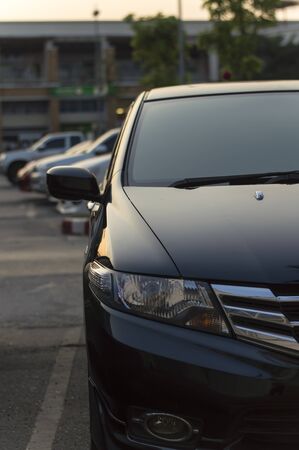Understanding Vehicle Insurance in India
India’s roads are bustling with a diverse mix of vehicles, from eco-friendly electric scooters to heavy-duty trucks navigating urban and rural landscapes. In this vibrant setting, vehicle insurance plays a pivotal role—not just as a legal safeguard, but also as an environmental responsibility. Every owner is required by the Motor Vehicles Act, 1988 to insure their vehicle, whether it’s for private use or commercial operations. This law aims to protect not only individuals but also the larger community and environment by ensuring accountability and responsible usage of public infrastructure.
There are two primary categories of vehicle insurance coverage in India: private and commercial. Private vehicle insurance is designed for personal vehicles—like your family car or scooter—used strictly for non-commercial purposes such as daily commutes or leisure trips. Commercial vehicle insurance, on the other hand, covers vehicles employed for business activities, like goods carriers, auto-rickshaws, taxis, and delivery vans that keep Indian cities moving. The distinction between these two types of coverage is crucial since each faces different risks, regulatory requirements, and environmental impacts. Understanding these differences lays the foundation for responsible vehicle ownership and contributes to a more sustainable urban ecosystem.
2. What Qualifies as a Private vs Commercial Vehicle?
In India, the distinction between private and commercial vehicles is not just a matter of paperwork—its woven into the fabric of everyday life, from the bustling streets of Delhi to the quiet lanes of Kerala. Indian law clearly outlines what counts as a private vehicle versus a commercial one, but in practice, the differences are also shaped by culture, tradition, and daily needs.
Legal Definitions and Daily Realities
According to the Motor Vehicles Act, 1988, a private vehicle is registered for personal use only. These include your family’s Maruti Suzuki Alto, a student’s Royal Enfield Bullet, or even that electric scooter used to commute to work. In contrast, commercial vehicles are those registered for business purposes—think yellow-plated taxis weaving through Mumbai’s traffic, autorickshaws ferrying passengers in Chennai, or trucks transporting goods across state lines.
Cultural and Real-Life Examples
For many Indian families, owning a car is more than convenience; it’s a symbol of upward mobility and independence. That car is used for everything from school runs to temple visits. On the other hand, commercial vehicles like lorries or Ola cabs are essential lifelines for millions who earn their livelihood on the road. The difference isn’t just about ownership—it’s about intent and usage.
Key Differences at a Glance
| Feature | Private Vehicle | Commercial Vehicle |
|---|---|---|
| Purpose | Personal/Family Use | Business/Transport Use |
| License Plate Colour | White background with black letters | Yellow background with black letters (or black plate with yellow letters for self-drive rentals) |
| Examples | Personal cars, two-wheelers | Taxis, autorickshaws, trucks, buses |
| Insurance Requirements | Basic third-party or comprehensive cover | Mandatory commercial insurance with higher liability cover |
This clear-cut legal and cultural distinction directly impacts how insurance claims are processed. Understanding these categories is crucial—not just for compliance but also for making sustainable choices when navigating India’s vibrant urban landscapes.

3. Coverage Differences: Private vs Commercial Policies
When it comes to vehicle insurance in India, the scope of coverage for private and commercial policies varies greatly, reflecting the diverse needs of urban mobility and local regulations. Private vehicle insurance primarily focuses on covering individual owners against losses due to accidents, theft, fire, and natural calamities. These policies are designed with the city commuter in mind, offering protection for personal use but often excluding any form of profit-making activities. Importantly, private insurance does not cover passenger liability beyond immediate family or friends, as commercial use is strictly prohibited under such plans.
In contrast, commercial vehicle insurance extends its protection to vehicles used for business purposes — from taxis and auto-rickshaws plying the busy streets of Mumbai to delivery vans navigating Delhi’s bustling lanes. These policies specifically address passenger liability, covering injuries to fare-paying passengers or third parties, which is a legal requirement under Indian Motor Vehicles Act for most commercial operators. Furthermore, commercial insurance must take into account route permits: vehicles are only insured for approved routes as stipulated by state transport authorities. Any deviation may affect the validity of a claim, making compliance crucial for fleet owners and drivers alike.
Adding an urban environmental perspective, both policy types are increasingly addressing issues like pollution control and waste management. Many Indian cities now require vehicles—especially commercial ones—to comply with emission standards (like BS-VI norms) as a prerequisite for valid insurance. Some insurers offer premium discounts for electric or CNG-powered vehicles, incentivising greener choices amidst rising concerns over air quality in cities like Bengaluru and Chennai. Ultimately, understanding these nuanced differences helps urban Indians select the right cover while contributing to safer and more sustainable city life.
4. The Claim Process: Comparing Private and Commercial Vehicles
In India, the claim process for private and commercial vehicle insurance comes with its own set of procedures, paperwork, and hurdles. For both types, a prompt notification to the insurer is crucial, but the steps diverge considerably due to regulatory requirements and the nature of vehicle use. Understanding these differences can help drivers and fleet owners avoid unnecessary delays and frustrations.
Document Requirements: What You Need
| Requirement | Private Vehicle | Commercial Vehicle |
|---|---|---|
| Registration Certificate (RC) | Mandatory | Mandatory |
| Driving Licence | Owner/Drivers DL | Driver’s DL + Badge (if applicable) |
| Insurance Policy Copy | Required | Required |
| Permit & Fitness Certificate | Not Required | Compulsory for Claims |
| Load Challan/Toll Receipts | Not Applicable | Might be Asked (Goods Vehicles) |
| Trip Sheet/Logbook | No | Yes, for verification (Taxis/Buses) |
| PAN Card/GST Details (for settlement) | No | Yes, especially for businesses & GST input claims |
| Police FIR/Report (if applicable) | If required by insurer or in major accidents/theft cases | Almost always needed due to legal compliance and third-party liability issues |
Timelines: Settlement Duration Differences
The claim settlement timeline for private vehicles is generally shorter, typically ranging from 7 to 15 working days after submission of all documents, provided there are no discrepancies. In contrast, commercial vehicle claims often take longer — sometimes up to 30 working days or more — due to additional scrutiny around permits, driver credentials, cargo verification (for goods carriers), and occasionally cross-verification with RTO authorities.
Unique Challenges in Indian Context
- Bureaucratic Delays: Commercial vehicle owners frequently report delays due to missing permits or outdated fitness certificates — a common issue in Indian logistics operations.
- Cargo and Passenger Verification: For taxis and goods carriers, insurers may require proof of journey or delivery completion, which can be challenging if documentation is incomplete or lost.
- Cultural Nuances: In many small towns, verbal agreements often replace formal paperwork, creating hurdles during claim processing as insurers insist on proper documentation.
- Lack of Digitisation: While urban centres offer digital claim filing options, rural areas still rely on manual processes, slowing down settlements for both private car owners and transport entrepreneurs.
Navigating the Process: Local Insights Matter
Navigating vehicle insurance claims in India—whether for your family’s hatchback in Bengaluru or a fleet of trucks plying the highways from Chennai to Delhi—requires an understanding of local regulations, document readiness, and patience with procedural checks. Building a good rapport with your insurance agent and maintaining up-to-date records can ease the journey considerably for both private motorists and business owners alike.
5. Challenges, Exclusions, and Common Myths
Claims Process: Urban vs Semi-Urban Realities
The process of claiming vehicle insurance in India often differs significantly between private and commercial vehicles, especially across metros like Mumbai or Delhi and semi-urban areas such as Nashik or Coimbatore. While private vehicle owners may face delays due to documentation or surveyor inspections, commercial vehicle operators often grapple with the need for more extensive paperwork, third-party verifications, and sometimes language barriers at local RTOs. The lack of digital literacy in smaller towns further adds to claim processing delays, making timely settlements a challenge.
Common Exclusions in Indian Policies
Both private and commercial insurance policies in India come with a set of standard exclusions that are important to understand. For instance, claims arising from driving under the influence of alcohol or drugs, using the vehicle for purposes not permitted by the policy (such as using a private car for commercial transport), or damages occurring outside specified geographical limits are typically not covered. In semi-urban regions, many policyholders remain unaware that wear and tear, electrical breakdowns, and damage during riots or natural calamities without add-on covers are generally excluded.
Myth #1: “Any Accident Is Covered”
A widespread misconception among Indian motorists is that insurance will cover any type of accident. In reality, coverage depends on the cause of the accident and adherence to policy terms—especially critical when commercial vehicles ply long distances through varying road conditions.
Myth #2: “Commercial Insurance Is Just More Expensive—Nothing Else”
Many small fleet operators believe commercial insurance is only about higher premiums. However, these policies offer broader protection tailored for business risks but also come with stricter compliance requirements regarding driver records and cargo declarations.
Myth #3: “No Claim Bonus (NCB) Works the Same for All”
While NCB benefits apply to both segments, their calculation and transferability differ. For instance, NCB earned on a private car policy cannot be transferred to a commercial vehicle policy—a detail often missed by owners upgrading their usage category.
Local Wisdom: Navigating Claims Efficiently
In Indian cities where traffic congestion is routine and accidents frequent, quick reporting to insurers and honest disclosure are key steps. Meanwhile, in semi-urban belts where agent networks are stronger than online platforms, building a relationship with your local insurance agent can help expedite claims and clarify grey areas around exclusions and add-ons. Being aware of these challenges and myths helps all Indian motorists—whether in bustling Bengaluru or scenic Kochi—make informed decisions about their vehicle insurance claims.
6. Tips for Urban India: Making Conscious Insurance Choices
Living in Indias bustling cities means navigating unique challenges—dense traffic, air pollution, and a fast-paced lifestyle. When it comes to vehicle insurance, making mindful choices can protect your investment and contribute to a safer, more sustainable urban environment.
Choose the Right Policy: Private vs Commercial
Understand your vehicle’s primary use. If you drive for personal reasons, opt for private vehicle insurance—it offers coverage tailored to individual needs and family safety. For taxis, delivery vans, or ride-sharing vehicles, commercial insurance is mandatory and covers liabilities that arise from business use. Check the policy details and select add-ons like zero depreciation or roadside assistance that suit your city driving habits.
Avoiding Fraud in Urban Settings
Cities are hotspots for insurance scams. Only purchase policies from registered insurers listed on the IRDAI website. Always insist on digital receipts and policy documents. Be wary of agents promising “guaranteed” claims or unusually low premiums—they might be fraudsters. During claim settlement, document accidents with timestamped photos and police reports when necessary; this reduces disputes and accelerates processing.
Supporting Safer Streets Through Responsible Choices
Your insurance isn’t just about protection—it’s a chance to promote road safety. Choose insurers who reward safe driving with no-claim bonuses or telematics-based discounts. Encourage family and friends to avoid false claims; fraudulent activities increase premiums for everyone and undermine trust within the community.
Contributing to Greener Urban Mobility
Many Indian insurers now offer incentives for electric vehicles (EVs) or hybrid cars—look out for these when insuring your next vehicle. Not only do EVs reduce emissions, but they often attract lower insurance premiums due to fewer moving parts and government-backed discounts. By making greener choices, urban drivers help improve air quality and set positive examples in their localities.
Final Word: Stay Informed, Stay Responsible
In India’s ever-changing urban landscape, staying updated about motor insurance rules—especially differences between private and commercial policies—empowers you as a responsible citizen. Smart insurance decisions mean peace of mind, reduced risk of legal hassles, and active participation in building safer, cleaner cities for all.


